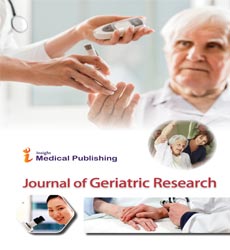A Brief Study on Effects of Joint Pains on Diabetes
Enzo Bonora*
Department of Endocrinology, University and Hospital Trust of Verona, Italy
- *Corresponding Author:
- Enzo Bonora Department of Endocrinology, University and Hospital Trust of Verona, Italy, Email: enzo.bonora@univr.it
Received : December 01, 2021; Accepted : December 15, 2021; Published : December 22, 2021
Joint discomfort is common and is often felt in the hands, feet, hips, knees, or spine. The pain may be permanent or even temporary. Sometimes a member may feel stiff, sore, or sore. Some patients complain of fever, tingling, or “grinding” sensations. In addition, the member may feel firm in the morning but relax and feel better with movement and function. However, too much work can make the pain worse. Joint pain can impair the function of the limb, and can reduce a person's ability to perform basic functions. Severe joint pain can affect quality of life. Treatment should focus not only on pain but also on affected functions and functions. Joint pain is very common, especially in old age. A national study states that about one third of adults have experienced joint pain in the past 30 days. Knee pain was the most common complaint, followed by shoulder and hip pain. However, joint pain can affect any part of the body, from the ankles and feet to the shoulders and hands.
True joint pain (joint pain) may or may not be accompanied by inflammation of the joints (arthritis). The most common symptom of arthritis is pain. Inflamed joints can also be warm and swollen, and in rare cases, the underlying skin may turn red. Arthritis can only affect the joints of the limbs. It can also affect joints in the central part of the skeleton, such as the spine and pelvis. Pain can occur only when the joint is moving or when it is stationary. Other symptoms, such as rash, fever, eye pain, or mouth sores, may be present depending on the cause of the joint pain. Different disorders tend to affect different numbers of joints. Because of this, doctors consider different causes of pain when the pain affects one joint (see Joint Pain: Single Joint) than when it affects more than one joint. When multiple joints are involved, some disorders are more likely to affect the same joint on both sides of the body (for example, both knees or both hands) than other disorders. This is termed symmetric arthritis. Also, in some disorders, arthritic attacks remain in the same joint throughout the attack. In other diseases, arthritis spreads from joint to joint (mobile arthritis).
Joint pain (called arthralgia) may or may not be related to inflammation of the joints (called arthritis). Arthritis can cause inflammation and pain. Various diseases can cause arthritis, including arthritis (such as arthritis), osteoarthritis, infectious arthritis, arthritis, autoimmune diseases (such as systemic lupus erythematosus) and vasculitis (such as immunoglobulin A). -associated vasculitis), osteonecrosis, and injuries affecting part of the bone within the joint. Arthritis pain can be new (severe, for example, if caused by disease, injury, or gout), or long-term (chronic, for example, if caused by rheumatoid arthritis or osteoarthritis). The pain caused by arthritis is usually worse when the joint is removed but is more likely to be present even when the joint is not moving. Pain caused by structures close to the joint, such as the ligaments, tendons, and bursa, may appear to be caused by the joint.
Open Access Journals
- Aquaculture & Veterinary Science
- Chemistry & Chemical Sciences
- Clinical Sciences
- Engineering
- General Science
- Genetics & Molecular Biology
- Health Care & Nursing
- Immunology & Microbiology
- Materials Science
- Mathematics & Physics
- Medical Sciences
- Neurology & Psychiatry
- Oncology & Cancer Science
- Pharmaceutical Sciences
